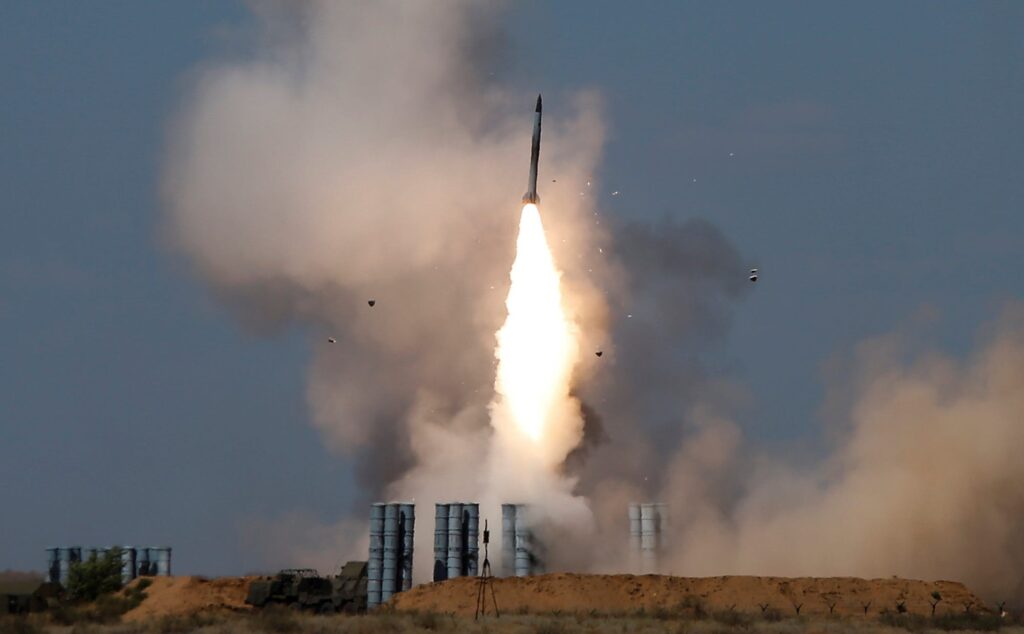- Greece is reconsidering sending up to 32 launchers and 175 missiles to Ukraine.
- Ukraine's air defenses are strained by Russia's fusillades.
- Greece may give away its S-300 air defenses for the superior US-made Patriot.
Greece is reconsidering sending Ukraine its Russian-made S-300 air defense missiles, a turnabout that comes after a Russian military struck close to its leader during a visit to Ukraine. Ukraine would undoubtedly welcome any potential transfer since its air defenses are under tremendous strain from unrelenting Russian bombardments.
Greek media reported on Monday that Greece might provide Ukraine with its S-300PMU-1 system if it obtains the superior US-made MIM-104 Patriot. Greek officials had ruled out supplying the S-300, initially purchased by Cyprus in the 1990s but ultimately delivered to Crete to defuse a crisis with Turkey. Athens has supplied Kyiv infantry fighting vehicles and small arms since Russia launched its full-scale invasion in February 2022.
The list of advanced weapons that countries initially denied Ukraine is long and includes F-16s, M1 Abrams tanks, and ATACMS missiles. The conversation around the Greek S-300 is changing, said George Tzogopoulos, a senior fellow at the Centre International de Formation Européenne.
"What is new is the change in the tone of the national media coverage about such a possibility," Tzogopoulos told Business Insider. "Greece's priority is its defense. As long as Greek defense needs are satisfied, the policy of swap deals will continue. The deeper Greek-American military collaboration goes, the more likely the Greek government will give new 'green lights' to US requests."
Warnings that Ukraine's existing stockpiles of Soviet-era air defenses, including its inherited S-300s, are nearing depletion made headlines in April 2023.
Frederico Borsari, a defense expert at the Center for European Policy Analysis (CEPA), told Insider the potential delivery of Greek S-300s "acquires even more relevance considering the recent destruction of at least one M903 launcher for the Patriot PAC-2 air defense system by a Russian Iskander-M ballistic missile."
The United States, Germany, and the Netherlands supplied Ukraine with Patriot missiles, which had success shooting down Russian Kinzhal hypersonic missiles and several Russian military aircraft. Ukraine may have lost at least one Patriot launcher — not an entire system — in a Russian Iskander missile strike outside the eastern city of Pokrovsk on Mar. 9; this claim could not be independently confirmed. The Russian defense ministry identified the destroyed launcher as a Ukrainian S-300.
There were already credible theories in January that Ukraine had relocated Patriots near the front lines, enabling them to shoot down a dozen Russian fighter jets in February.
"The loss showed the consequences of not changing location frequently in the context of a much faster detection-engagement cycle enabled by ubiquitous drones integrated with fire capabilities as part of multi-level reconnaissance-strike complexes," Borsari said.
Russia attacked Ukraine's Odesa on Mar. 6 while Greek Prime Minister Kyriakos Mitsotakis was visiting. A Russian missile exploded a mere 500 meters from the convoy he was traveling in with Ukrainian Prime Minister Volodymyr Zelensky.
"The Odesa military strike was a personal shock for the Greek delegation visiting Ukraine," Tzogopoulos said. "But strategic decisions are not made on the grounds of personal experiences. Greece values its strategic relationship with the US, which is how the new tone of the media discussion about sending S-300s to Ukraine could be better framed."
While Ukraine's capacity to continue fighting against Russia's invasion depends on many factors, Tzogopoulos pointed out that Greece's contribution could "acquire new significance" if it transfers S-300s. Greece is estimated to have 32 launchers and up to 175 missiles it could provide.
"Important as it will be, such a decision can hardly be considered a game changer, though," Tzogopoulos said. "Ukraine already possesses that type of long-range surface-to-air system and will benefit by seeing the number of its batteries increase — not by acquiring a new type of weapon."
Although it certainly won't be a new capability, the particular S-300 variant in Greece's possession could benefit Ukraine.
Borsari of CEPA pointed out that Greece's S-300PMU-1 variant is more capable than the S-300PS variant typically operated by Ukraine.
"The S-300PMU-1 relies on an upgraded battery's radar module with improved detection, tracking, and engagement capabilities (comprising the 30N6E fire control radar and 76N6E low-level early warning/acquisition radar — and potentially the battalion-level 64N6E acquisition radar) and can fire the 48N6E missile besides the usual 5V55 series," Borsari said.
Borsari added, "The latter has better kinematics, a longer range (up to 150 km), and a larger warhead. It uses a combination of radio command guidance and semi-active radar homing guidance and is effective against a wide target set, from cruise missiles and fast jets to ballistic-type threats." Kinematics refer to the flight paths that can be flown to intercept an incoming missile or aircraft.
Given the "attrition suffered" by Ukrainian S-300 systems so far in this war, Borsari believes that even a "limited number of launchers" could be "very useful" for Kyiv.
"If radars and spare interceptors are also included in the package, that would be a significant addition to Ukraine's air and missile defense," Borsari said.
